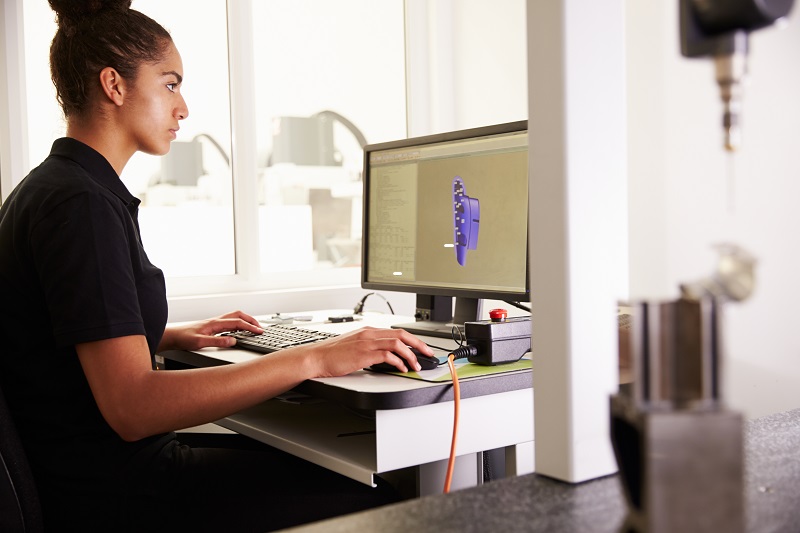As we celebrated International Women in Engineering Day on Tuesday 23rd June, Ellie Barratt, Global Alliances Manager of Natterbox shares with us the importance of encouraging more women in tech, as the number of women in tech has flatlined at 19% since 2009.
The problem
Ellie Barratt says: “Like many other women, I fell into a career in technology rather than being encouraged into it. I started in a recruitment role, and it was only then that I had the first glimpse into all of the opportunities that are available in the technology and engineering industries – ones that I had never heard of before. Although excited at the prospect of finding out about this new technology world, I also became frustrated at the lack of education I had received about it from a younger age. At an important time in my life, when it was expected that I decide what subjects I’d like to take and which career I might venture into.”
There are many reasons why women in tech have become frustrated or even put off the industry as a whole. The Women In Tech Survey 2019 results show that 22% of women may be put off working in the technology field due to fewer opportunities for senior roles and promotions, and 19% of women say it is due male domination in the industry.
The 13% of respondents that answered ’Other’ claimed that women would be put off working in the tech sector due to the lack of flexibility for working mums. Other popular responses were the lack of inspiration and role models for young girls.
The solution: education
Ellie says that education is key to getting women in tech roles: “Now I know that, despite stereotypes, you don’t have to be an overly technical person to work in technology and engineering – there’s a potential role for everybody. My role is more revolved around relationship building with partners and customers and running exciting events to make that possible. Recently, I ran our first virtual music event, which was great fun!
“For me, it’s important that other people get the opportunity to learn about technology at an earlier stage in their life alongside other industries and career opportunities. This needs to start with educational organisations and the careers advice offered to students.
“But it’s not just about women; this is about exposing all children to all the opportunities that are available to them. We need to educate the younger generations on how exciting technology truly is. It powers the world around us and the things that we interact with almost every day, from our mobile phones to contactless credit cards – all the things that we take for granted.”
A PwC study with over 2000 a-level students also found that only 22% of students can name a famous female working in technology, whereas two thirds can name a famous man working in technology. The report says: “Technology organisations need to highlight how technology is a force for good if they want to attract more females to the sector. Half of the females say that feeling like the work they do makes the world a better place is the most important factor when deciding their future career.”
What employers can do
Ellie suggests that businesses have a role to play in supporting women in tech, too: “Businesses also have a key role to play in offering diversity initiatives and specifically ‘Women in Tech’ meet-ups, initiatives and groups. I have been lucky enough to see a change in these kinds of events from only women attending, to also seeing male allies attending and supporting diversity in the industry.
“I am also proud to work for a company that has a larger than average proportion of women working in technical roles. But examples like this are still way too few and far between – seeing women in tech roles shouldn’t be unusual, and it’s on us to make sure it becomes the norm.”
The Women in Tech Survey echoes the idea that businesses have more to do in offering diversity initiatives. Only 36% of respondents said that their company was working on having a gender-balanced workforce, 35% weren’t sure, and the remaining 29% said their companies were not working on having a balanced workforce.
Under half, 40% of respondents, that stated their companies were working on having a gender-balanced workforce said they are trying to achieve this by recruiting more women in tech using different recruitment initiatives. A mere 10% also mentioned that their companies are promoting women in tech and encouraging women into tech. Other answers included flexible working, getting involved with STEM activities through schools and providing women with training programmes.
The PwC Survey also shares advice on how business can help women in tech: “We need to make sure that the technology sector provides an attractive and inclusive working environment and that people can reach their full potential.
“So as well as attracting more females into the sector, we need to make sure that they can progress once they’re working there. This requires a dedicated focus. Technology organisations could set themselves gender targets and a programme of initiatives to support women to advance to more senior positions. This could include reverse mentoring, return to work schemes to get women into technology roles following career breaks and sponsorship programmes for high performing females.”









